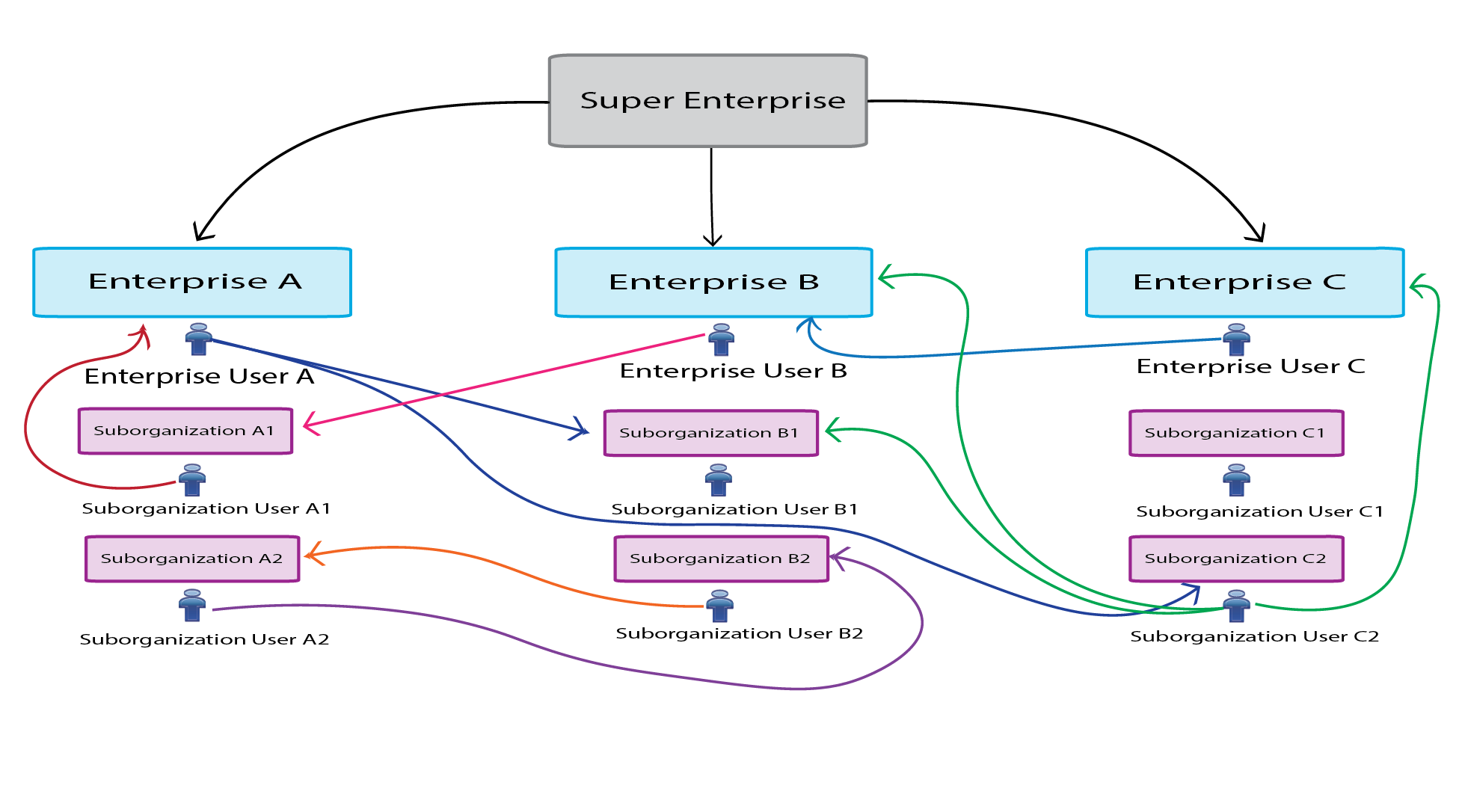Move users in an enterprise organization
The Enterprise User Move feature enables operators in an enterprise organization to easily move users between the different organizations in their enterprise. Enterprise Administrators can move users from the enterprise organization to any suborganization, from one suborganization to another, or from a suborganization to the enterprise organization. Enterprise operators can import users at the enterprise level, and then move them into the appropriate suborganization.
Enterprise Administrators can move users between suborganizations from the enterprise organization. Operators who are End Users Managers, Organization Administrators, Alert Managers, or Advanced Alert Managers in a suborganization can move users from their suborganization to other suborganizations.
Enterprise Administrators who are logged in to a super enterprise organization can move users from a suborganization of one enterprise organization to a suborganization in a different enterprise organization within the super enterprise. They can also move users between sub enterprises, from a suborganization to a sub enterprise, or from a sub enterprise to any suborganization.

Select the User Move for End Users option in General Settings in a suborganization to enable users to move themselves to that suborganization in Self Service. This option is enabled by default.
Users must be unique across the super enterprise, enterprise, and all suborganizations to use the Enterprise User Move feature. See Enable user uniqueness for more information.
When a user is moved from an organization, any roles they had in their original organization are revoked. If a user is later moved back to their original organization, the user's roles are not reinstated. The one exception is for users in the enterprise organization with the Enterprise Administrator role.
When a user is moved, any subscriptions to other suborganizations are automatically cancelled.
When a user is moved, their dependents are also moved.
The history of moved users is preserved. Sent alert reports still display all targeted users that were in the organization at the time the alert was sent.
The status of a user in their original organization (enabled or disabled) is preserved after being moved.
The attribute values for users (for example, personal device addresses) are preserved after being moved, even if those devices or attributes are not enabled in the new organization.
Once a user is moved out of an organization, they can no longer be targeted in any alerts, including draft or scheduled alerts, from that organization.
When a user is moved, their position in the organizational hierarchy is removed. If the user is later moved back to their original organization, their place in the hierarchy is reinstated if the node still exists. However, if the node the user was associated with no longer exists in the original organization, the user is associated with the root node.
When a user is moved by an operator or moves themselves, information about the move is recorded in the User Activity section in the user's profile and in the operator audit trail.
To prevent users from being moved between organizations after you have manually moved them either through the management system or by using the CSV import process, set the Prevent User Move attribute for those users. This is useful if you want to prevent users from being moved by an external synchronization source such as LDAP or ADSync.